Suzuki GSX-8S Review
With Rennie Scaysbrook – Images Julien Lacroix
It’s fair to say Suzuki could use a bit of good publicity at the moment. The Hamamatsu giant has been in the news for the wrong reasons these past 12 months, mainly centred around its decision to wind down its factory-backed international racing program, which saw the demise of that gorgeous blue GSX-RR MotoGP bike.
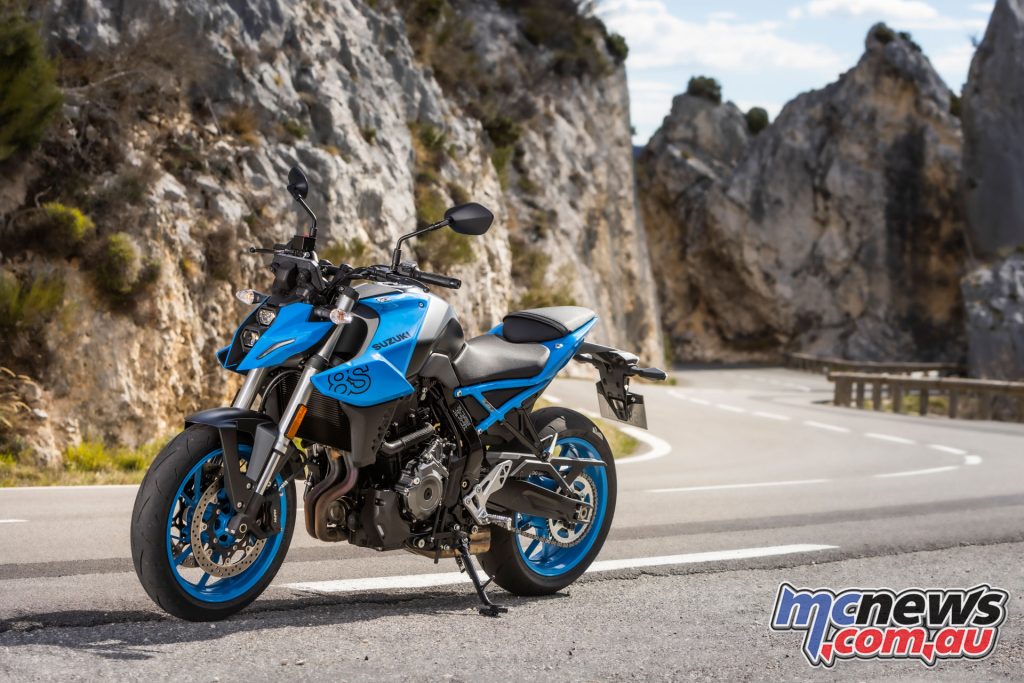
But Suzuki is changing tact as a brand and as a company. Racing doesn’t pay the bills anymore and the big S is redoubling its efforts into creating a new line of street bikes that share DNA to lower costs and improve what has become a pretty stagnant line-up.
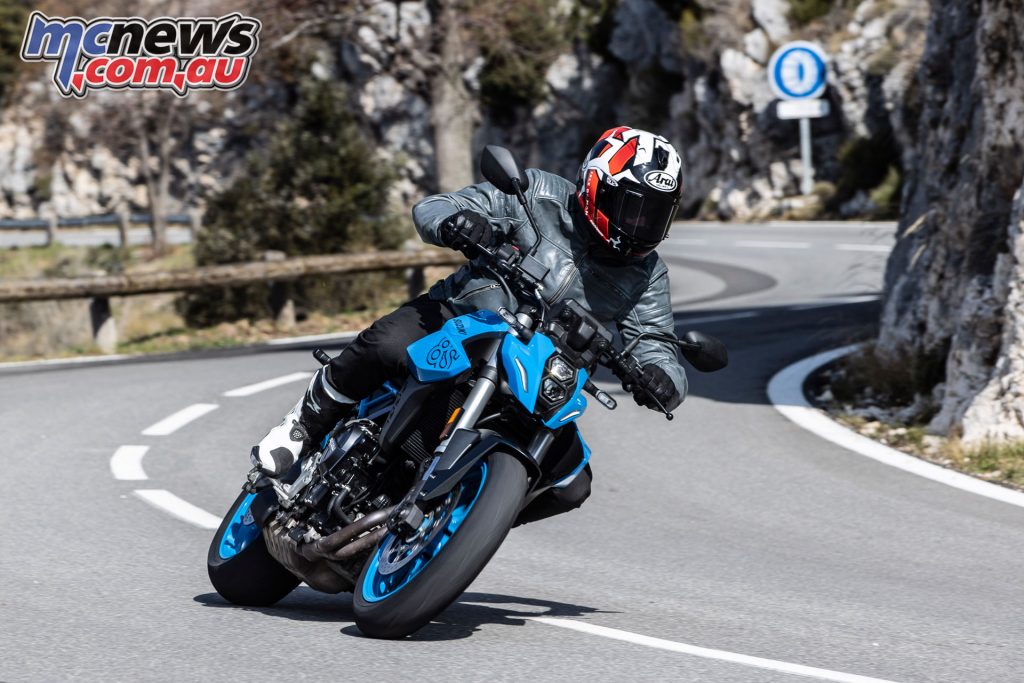
Suzuki has thus focused its attention on one of the hottest segments of the international motorcycling market, that of the mid-capacity nakedbike, an area that’s seen massive growth over the past decade.
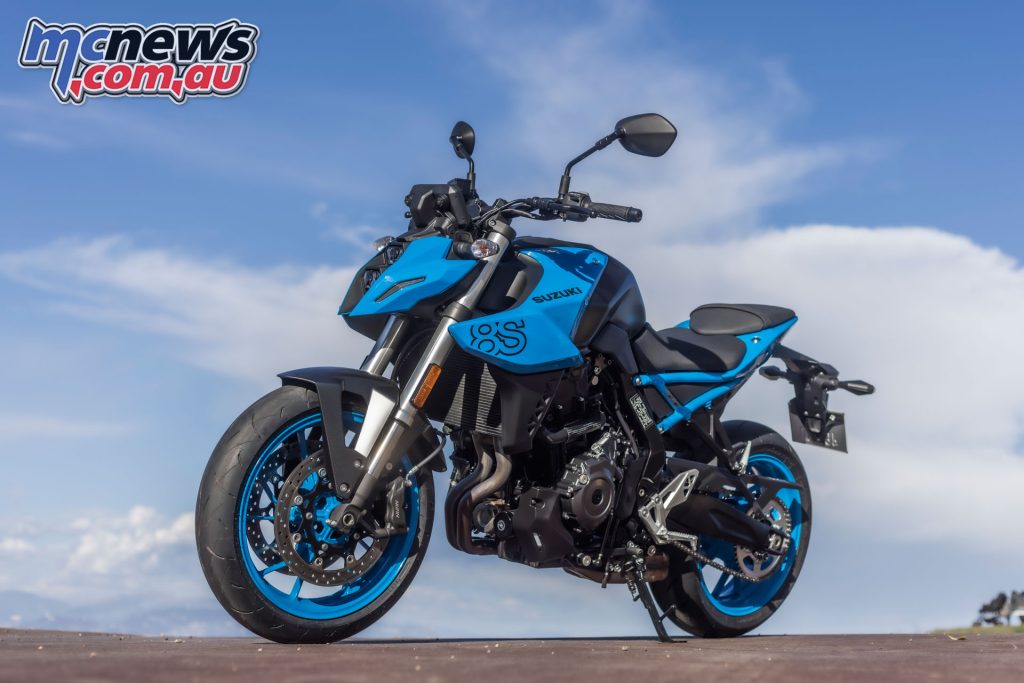
This new GSX8-S will go up against class stalwarts like the Yamaha’s MT-07, Honda CB650R, KTM 790 Duke, and Kawasaki’s Ninja 650, all of which are on the lower-end of the price point, and, equally, all of which are very good models for first timer/new riders, with enough pep to keep more experienced pilots interested.
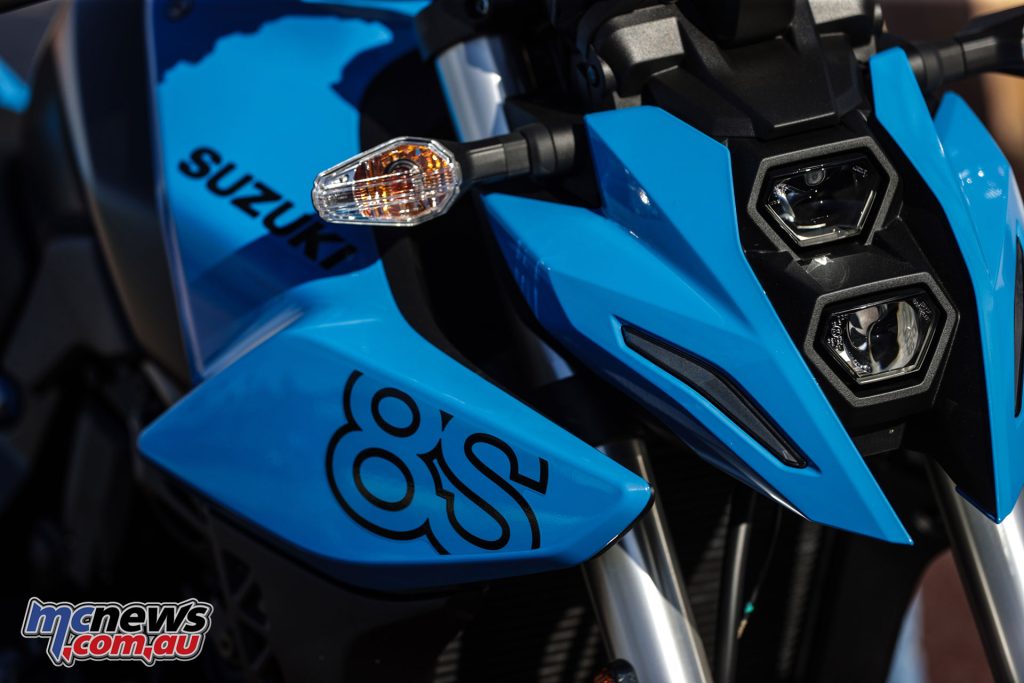
Coming in at $14,190 ride away, the 2023 Suzuki GSX8-S is on the higher side of the category price range but it’s by far the newest for those looking the latest bright and shiny ride. This machine is a big departure from the previous styling employed by Suzuki in that its gone for sleek and slim rather than bulky and wide, like on its other higher capacity nakedbike in the GSX-S1000.
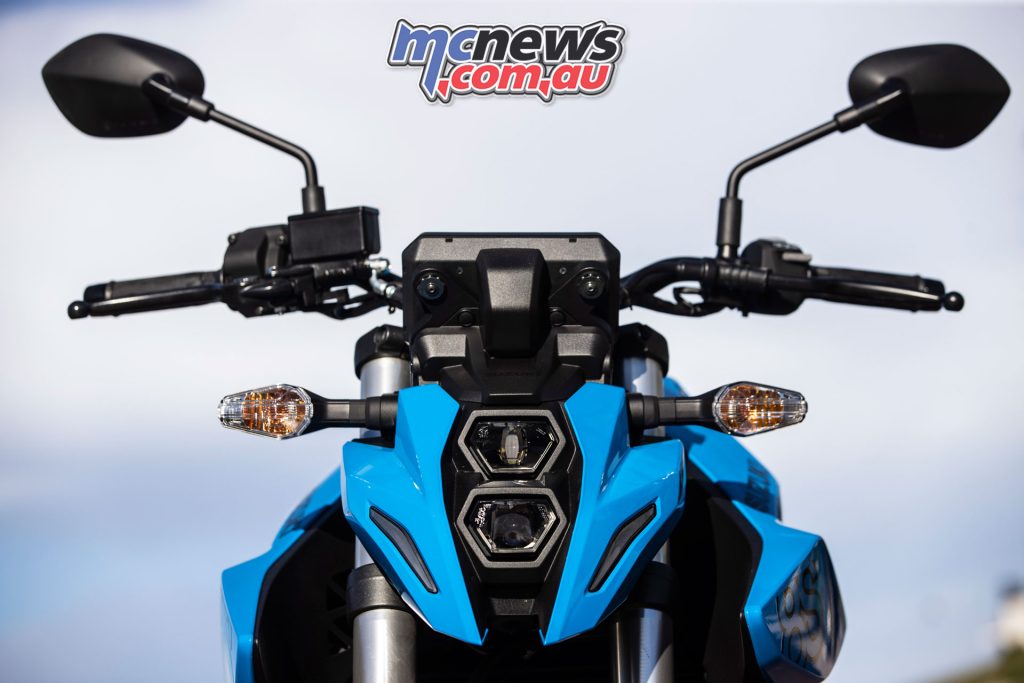
Funky stacked LED lights are flanked by position lights either side and give the GSX8-S an angry look to it, which is only accentuated by the beautiful all blue paint scheme for the bodywork and wheels of our testbike. You can also get the GSX8-S in white or black but, bugger that, go for the blue.
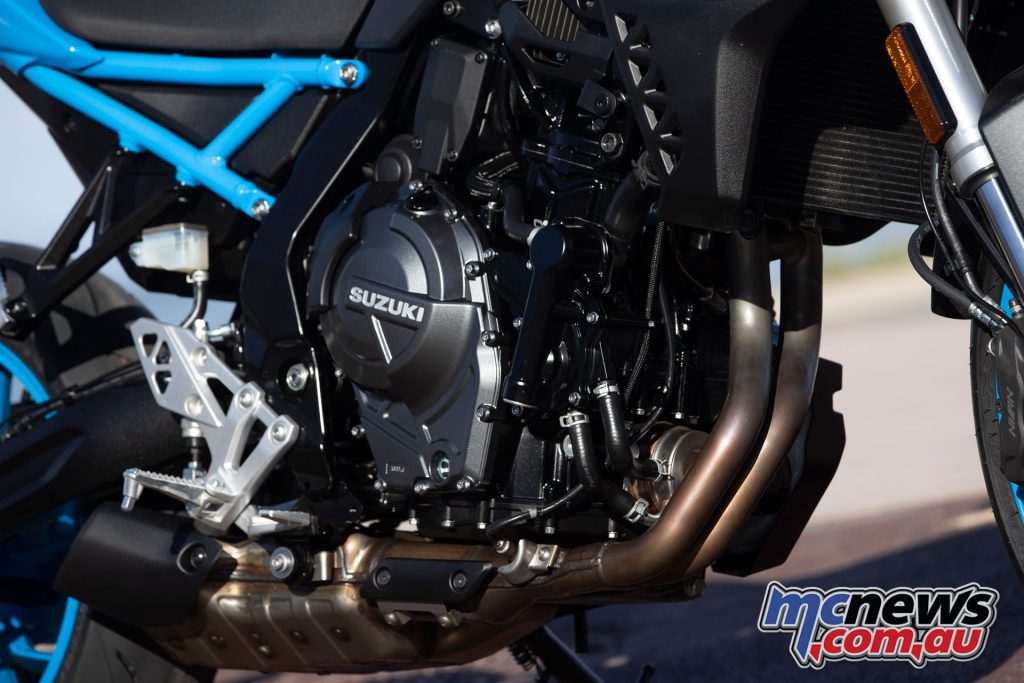
The 776cc parallel twin-cylinder motor running a 270° crankshaft has been developed and shared with the V-Strom 800DE, thus ensuring Suzuki gets the most bang for its development buck, and pumps out a claimed 83 horsepower at 8500 rpm, and 78 Nm of torque at 6800 rpm.
There’s three riding modes—a wet C-mode, standard B mode and the full house A mode; three-stage plus Off traction control and a factory-fitted up and down quickshifter, putting it ahead of the Yamaha and Kawasaki.
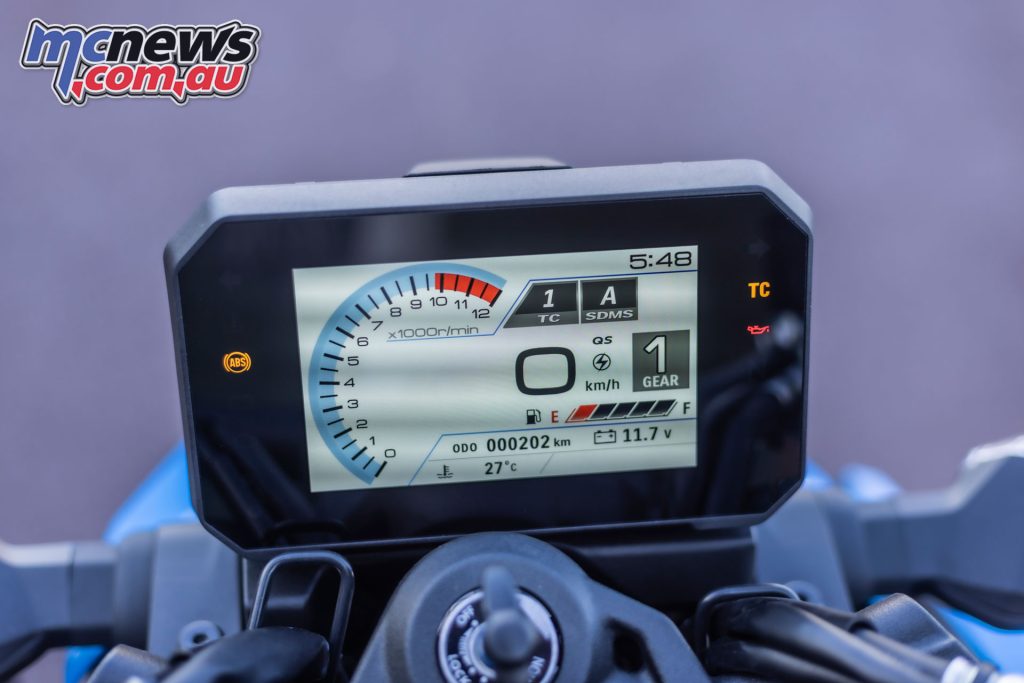
The motor is interesting in that it (like KTM with the 790), uses twin counter balancers to kill the unwanted vibrations inherent with a parallel twin, compared to the single balancer most of the competition uses. Dubbed the Suzuki Cross Balancer, patented by Suzuki and used for the first time on a production motorcycle, the system works by running a vibration-killing balancer for each cylinder running at 90-degrees to each other, below and in front of the crankshaft.
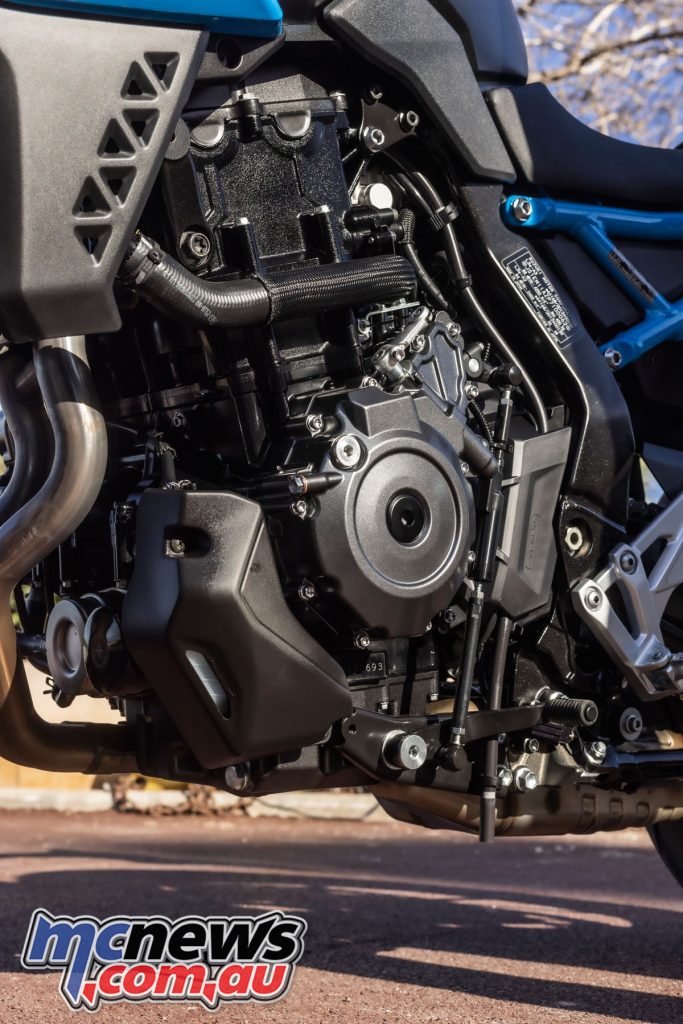
Suzuki feels the extra complexity with a twin-balancer system that helps kill off as many of the first and secondary vibrations as possible is worth it despite the weight disadvantage. The result is an engine that’s exceptionally smooth at low-to-medium rpm. Truth be told, it’s smooth all the way to redline, but the best performance is found when the revs are situated below 8000 rpm.
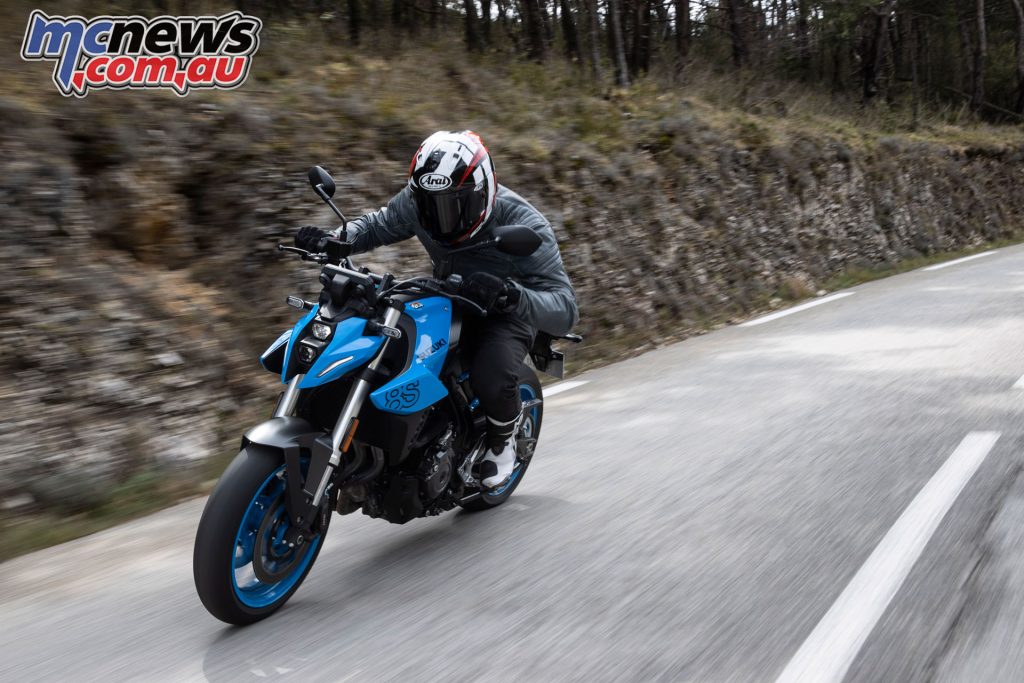
The crank fires at 270° and 720°, which extends the time between the power pulses to give the rear tyre a rest while invoking feelings of a more robust V-twin. The stumpy little exhaust existing behind the rider’s right boot gives a decent little bark, kinda like a medium size dog that’s imitating its bigger mate.
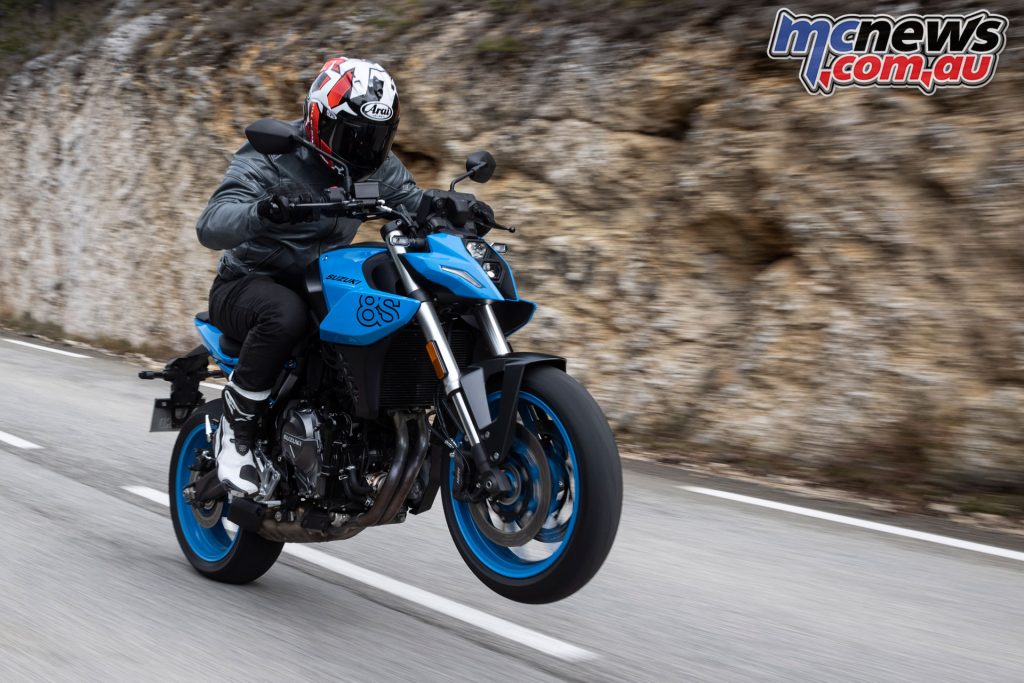
For much of the test I circulated in B mode, which gave a creamy smooth throttle response while still giving enough performance to keep me happy. This engine has been designed first as a streetbike — you’ll not find any “derived from racing” stickers, or whatever companies say to justify their racing programs, on the GSX8-S.
This is first and foremost about being a motorcycle almost anyone can hop on and enjoy, which the B mode certainly provides.
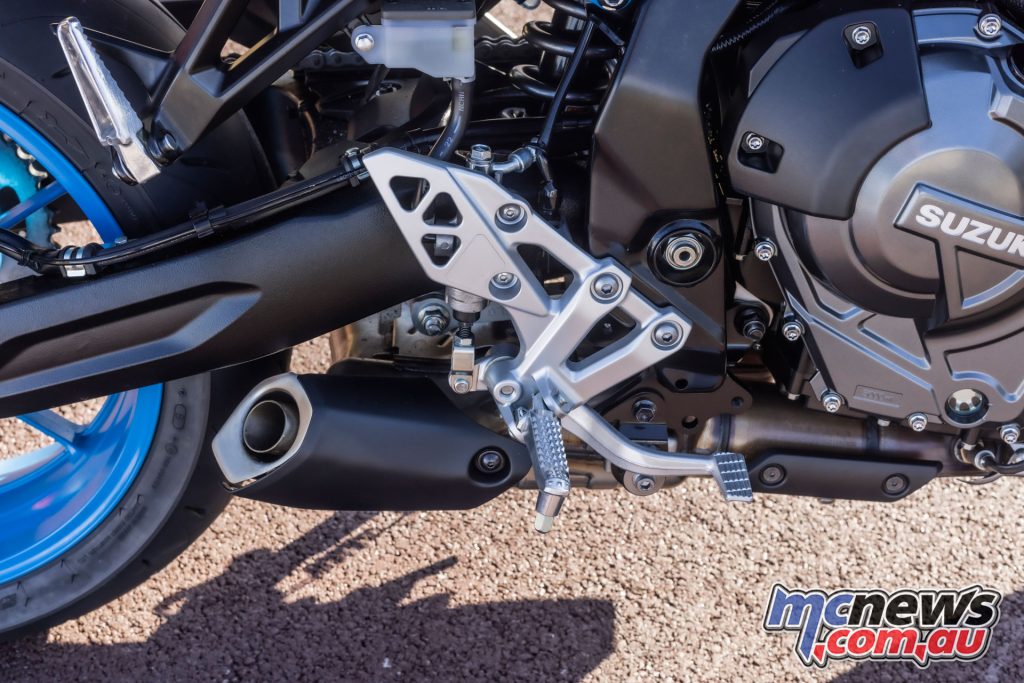
However, stick it in A mode and that’s where the engine shows its best performance. The throttle becomes peppier, and you’ll find yourself climbing the rev ranges with a bit more zest. You can charge up the rev range and make friends with the upper power ranges but I found the best performance to be sub-8000 rpm.
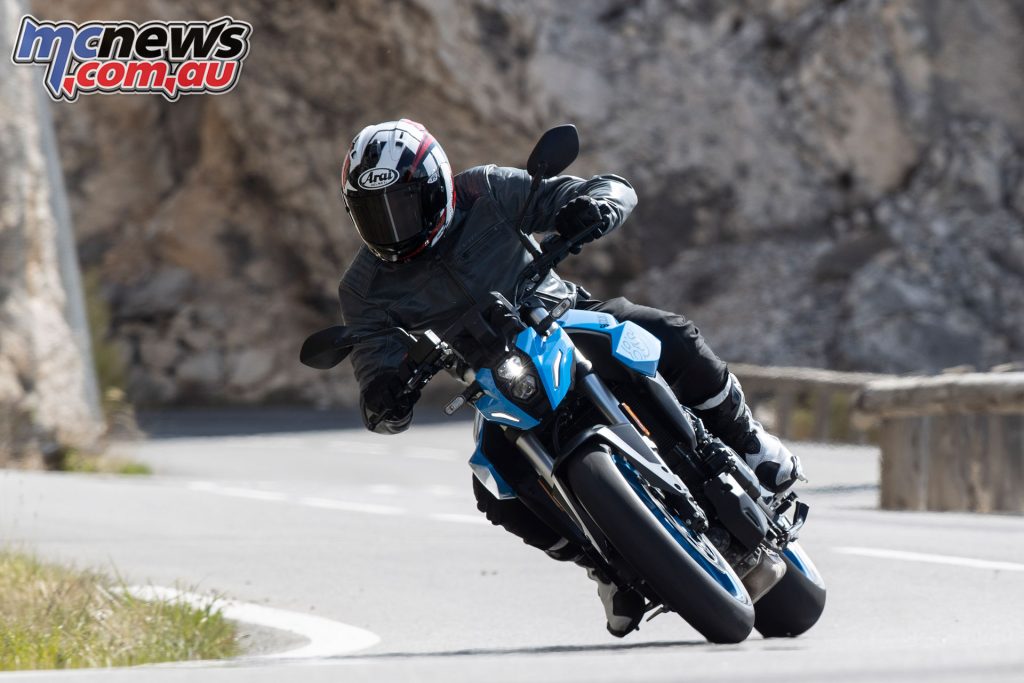
Peak power is claimed at 8500 rpm, however, keep it singing around the 4-7000 rpm range and that’s where the most jollies are found. There’s a pretty substantial over-rev as the rev limiter doesn’t kick in until nearly 11,000 rpm, but at that point all the good stuff is gone. However, it does suggest there might be a fairly wide scope for some aftermarket fettling if one was so inclined.
Where the GSX-8S’s motor shines is around town and in traffic. You can be lazy and lug this little twin around town. Sub 5000 rpm torque is exceptionally smooth (that word again, especially in B mode) – you can leave it in a higher gear than you’d normally expect and just let the motor pull you from point to point, as we did in the endless traffic of the French Riviera. It’s a hard job, I know.
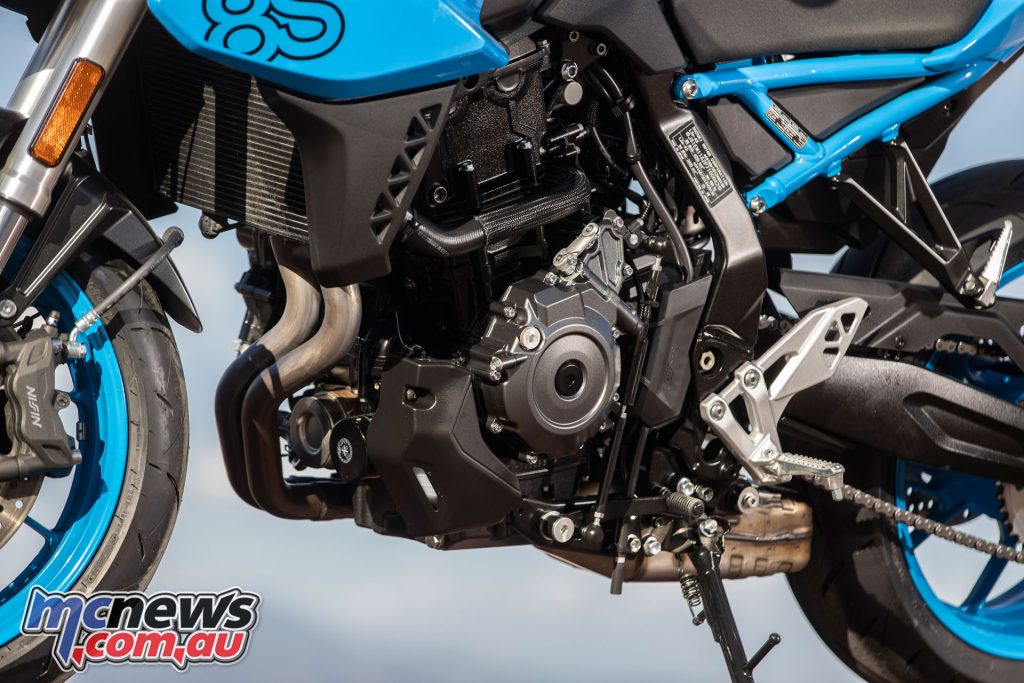
The GSX8-S is accompanied by its up and down quick-shifter, so that’s a plus. It’s a little like the one found on the Triumph Street Triple 765 range in that up-shifts are smooth as silk but it doesn’t love high rpm bashing back through the gears. The system likes you to take it easy and not rush your down-shifts, and if you do so, you’ll never miss a gear every time.
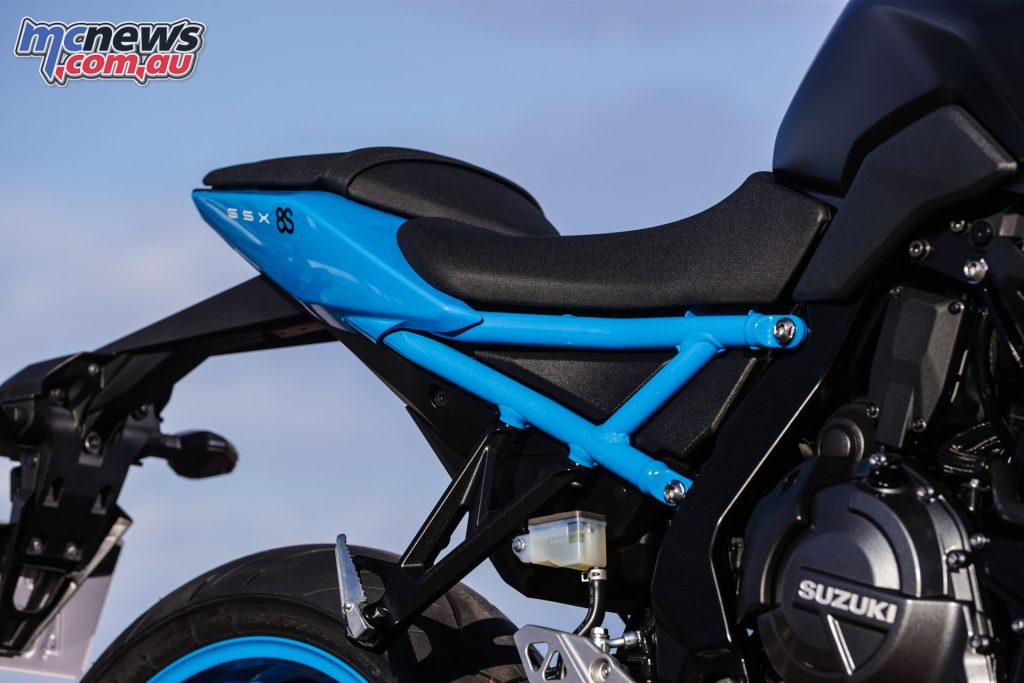
Aesthetically, it’s a compact little engine that has pockets of free space around the tubular steel frame. The engineers have moved the airbox from the top of the motor as per conventional wisdom to between the tubular steel frame rails, which has allowed the engineers to make the 14 litre fuel tank slim and long.
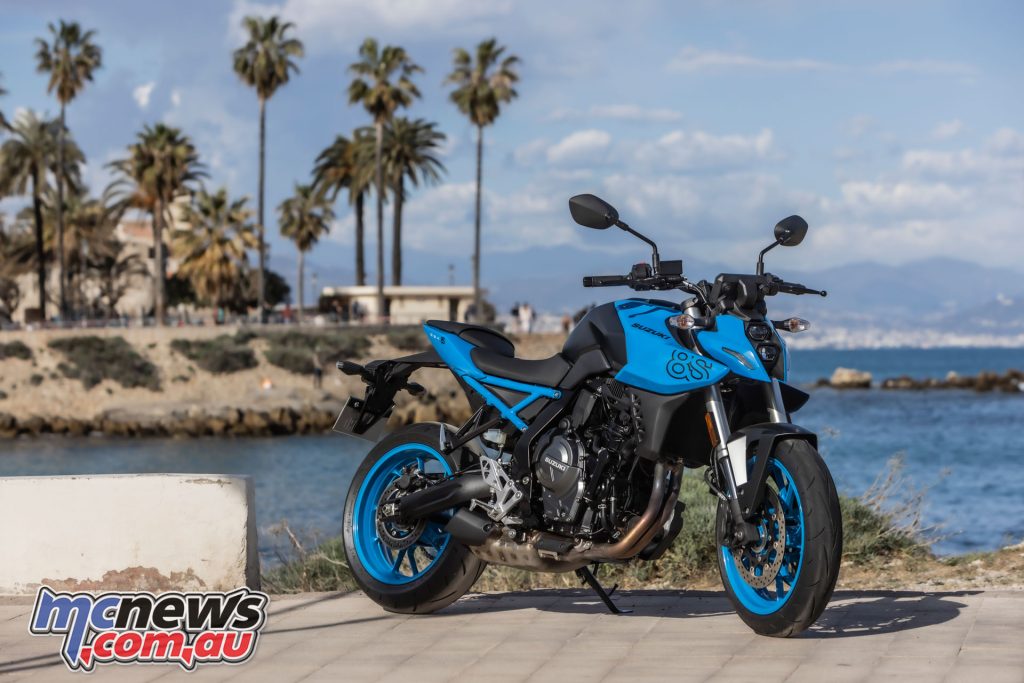
This, along with the 810 mm seat height, offers quite a rangy riding position when in comparison to something like an MT-07, so it’ll be handy for taller riders like me at 193 cm.
That comment I mentioned about the around town performance also relates to the chassis. The tubular steel frame is mated to non-adjustable inverted forks and a KYB shock at the back that only comes with pre-load adjustment.
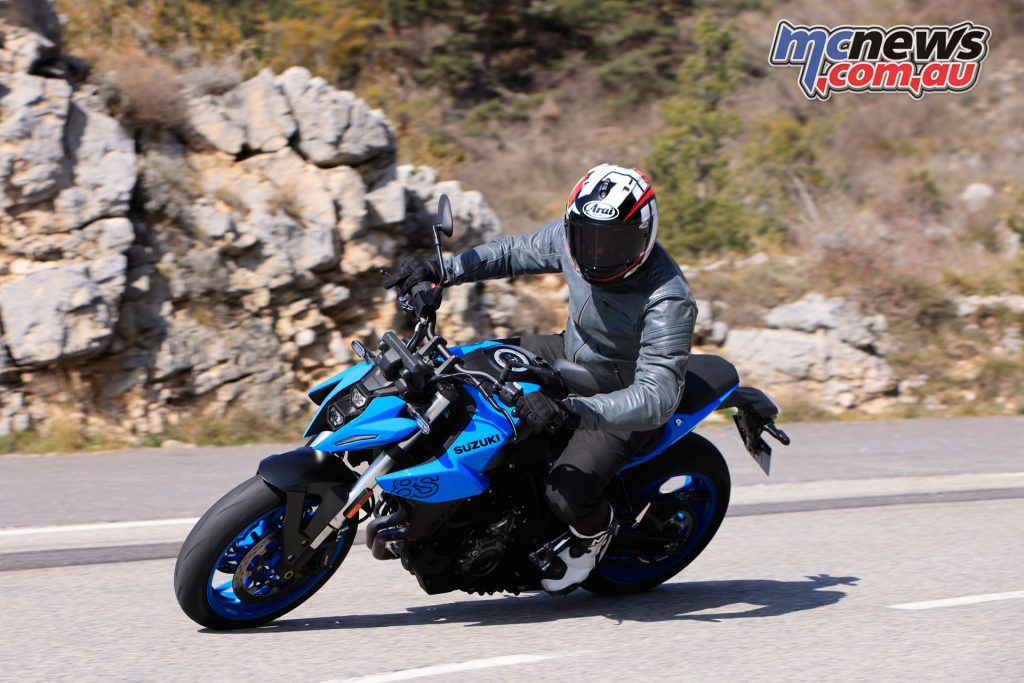
At 86 kg before I throw on riding gear, that rear spring was just too soft for me and had the back-end sinking as soon as I touched the throttle in any form of anger, so two steps on the pre-load collar were immediately in order.
Despite this, ride comfort is good, without being uncomfortable for the majority of riding situations, but hit the mountains with any real vigour and you’ll soon reach the limits of the suspension. But, again, for around town, Suzuki’s done quite well for a base suspension set-up, at this price point.
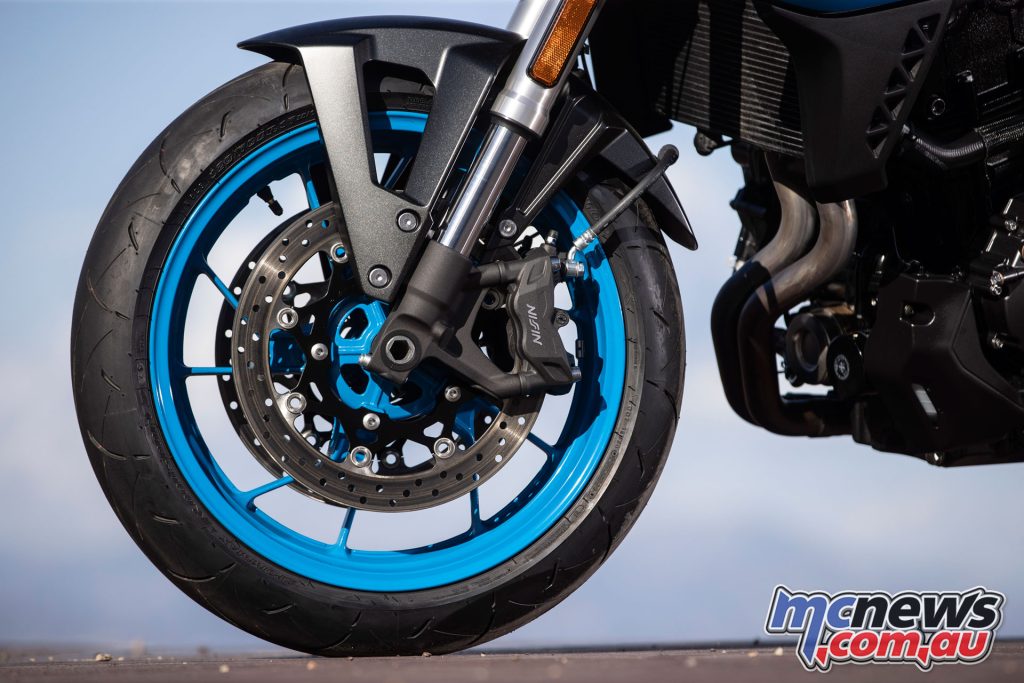
The brakes come in the form of Nissin four-piston calipers up front clamping on twin 320 mm discs and a single piston Nissin caliper biting a 240mm disc at the rear, backed up by ABS. There’s no lean angle Cornering ABS on this bad boy — the class and price point see to that — but the brakes work quite well and I didn’t experience any fade over a pretty spirited run back down the mountain from our shooting point.
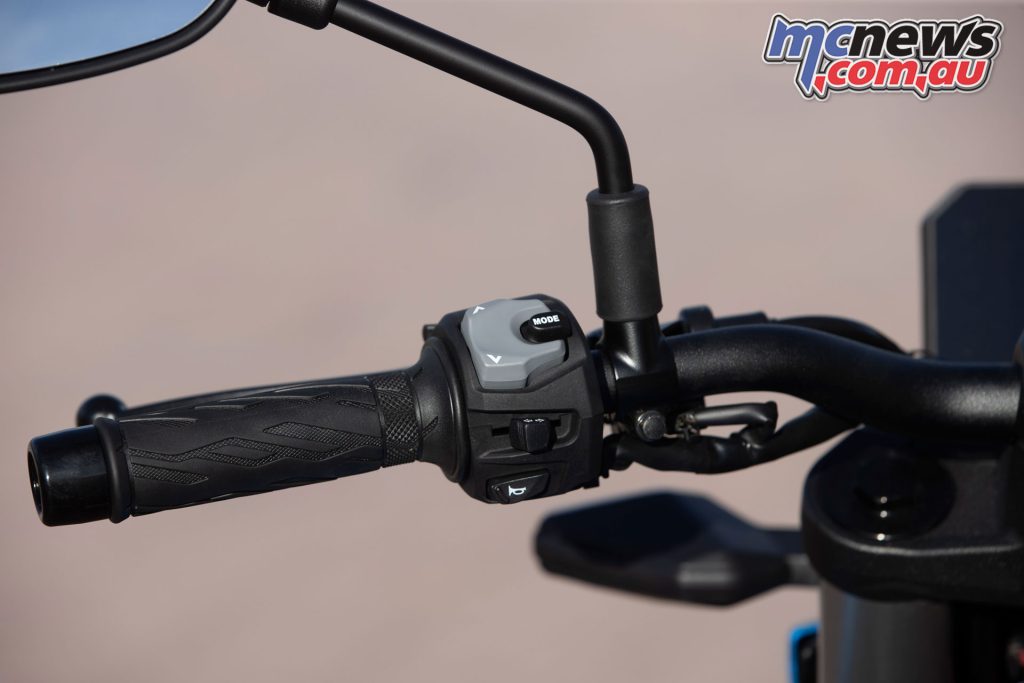
A span adjustable brake lever at least gives some adjustment for those whose hand size differs from the Suzuki test rider’s, which is probably all of us.
The ABS can’t be switched off via the five-inch TFT display, an area that — hallelujah — Suzuki has finally paid some attention to (don’t get me started on the GSX-S1000 dash).
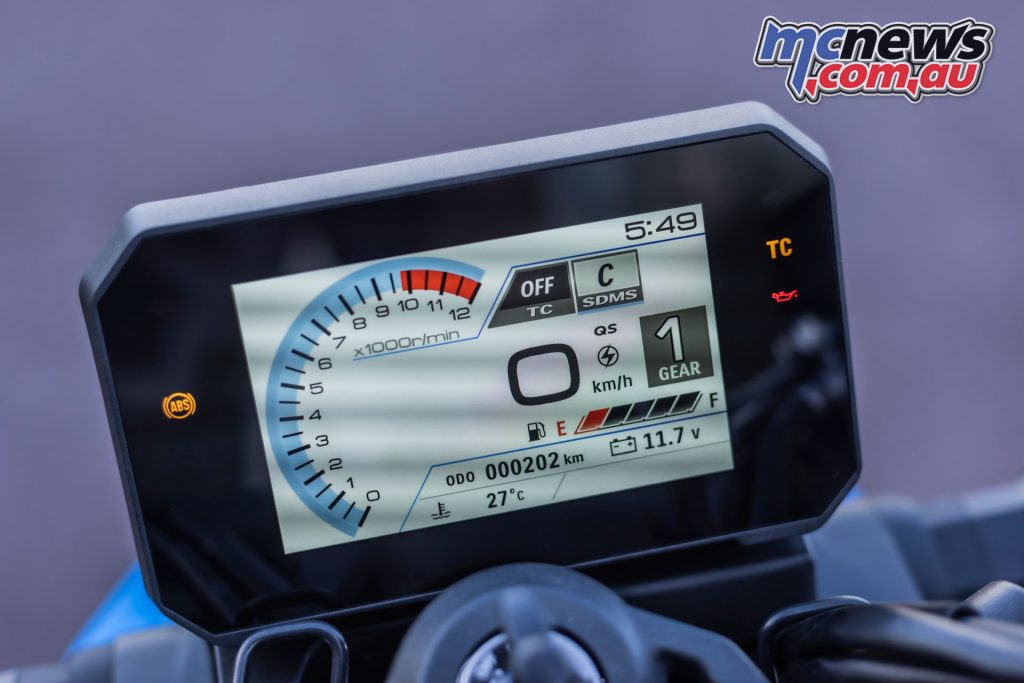
You can adjust the Suzuki Traction Control System (STCS) to one of three levels (hint: just put it in level one and leave it), as well as the three riding modes and the usual stuff like fuel mileage and mileage trips, so you won’t get lost in the system like you would on a Honda Africa Twin DCT, which has more options than a bloody spacecraft.
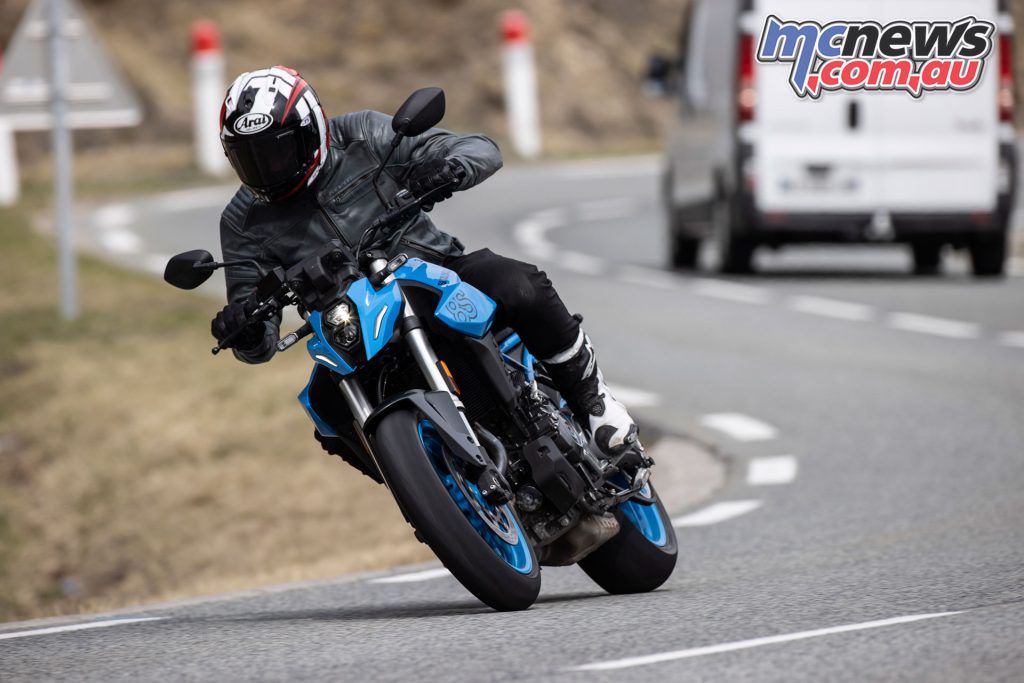
With Suzuki’s arrival in the mid-size nakedbike class, the grid is now complete with a full representation from the big four of Japan. There’s also the Euros like KTM, BMW and, if you want to stretch that far, and Ducati with the admittedly bigger capacity Monster.
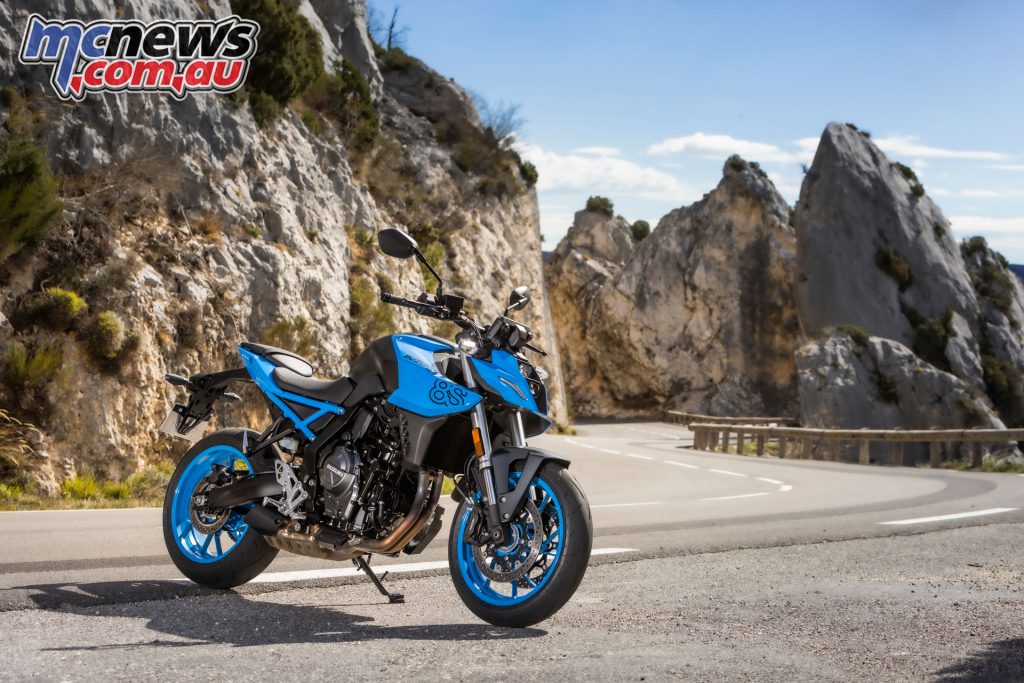
But while the Euros seem to be more interested in fighting it out for 1000 cc-plus supremacy, Japan is creeping back market share with mid-capacity nakeds, which can actually be used without feeling like your licence is on death row every time you venture out on the road.
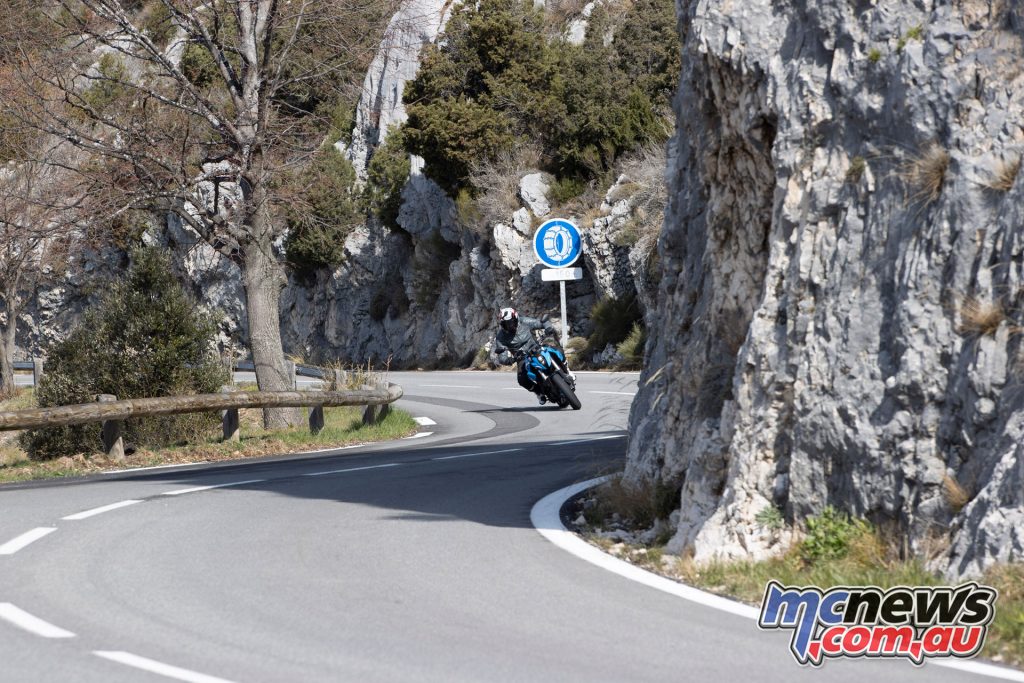
Suzuki’s first attempt at this brave new world, now the SV has gone to god, is a very good one indeed. It’s not a nakedbike pretending to be a racer, it’s a proper streetbike that has a bit of attitude to it while still being accessible by almost any kind of rider, which is probably what we all need right now.
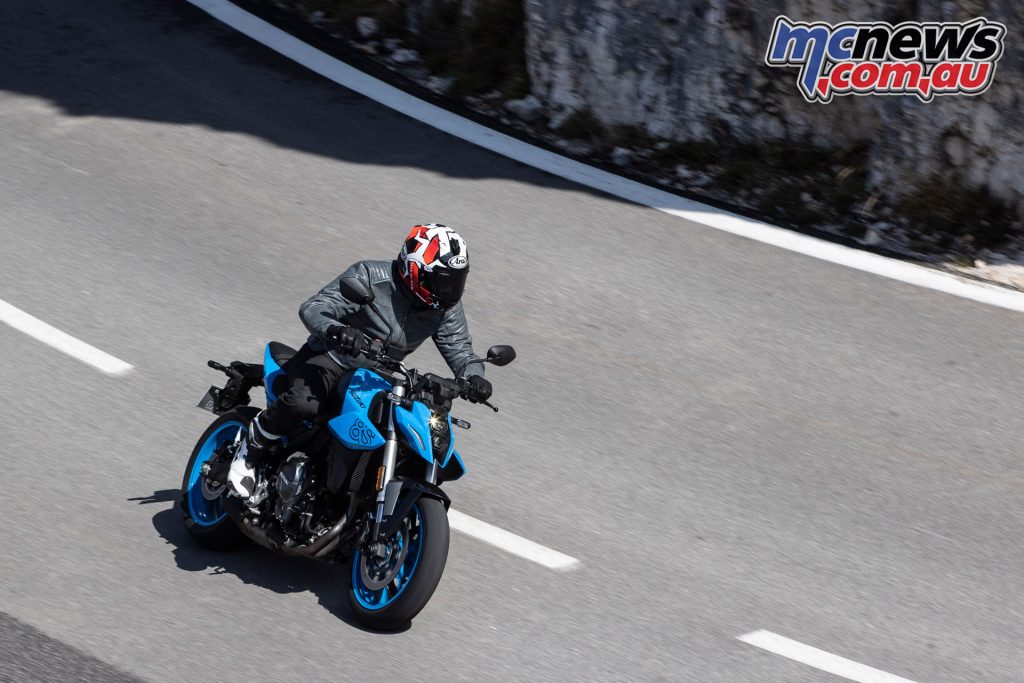
For more information check out the Suzuki Motorcycles Australia website (link).
2023 Suzuki GSX-S8 Specifications
| 2023 Suzuki GSX-8S Specifications | |
| Engine | 4-stroke, 2-cylinder, liquid-cooled, DOHC |
| Bore x stroke | 84.0 mm x 70.0 mm (3.3 in. x 2.8 in.) |
| Displacement | 776 cm3 (47.4 cu. in.) |
| Compression | 12.8 : 1 |
| Claimed Power | 83 hp (61 kW) at 8500 rpm |
| Claimed Torque | 78 Nm at 6800 rpm |
| Induction | EFI, 2 x 42mm throttle bodies, Rbw |
| Lubrication system | Forced feed circulation, Wet sump |
| Transmission | Six-speed constant mesh, optional two-way quick-shift |
| Suspension Front | Inverted telescopic, coil spring, oil damped |
| Suspension Rear | Link type, coil spring, oil damped, preload adjustable |
| Rake / trail | 25° / 104 mm (4.1 in.) |
| Brake | Dual 310 mm rotors, radial four-pot calipers (F), 240 mm single-pot caliper (R) |
| Tyres | 120/70ZR17 (F), 180/55Z (R) |
| Fuel capacity | 14 L |
| Overall length | 2,115 mm (83.3 in.) |
| Overall width | 775 mm (30.5 in.) |
| Overall height | 1105 mm (43.5 in.) |
| Wheelbase | 1465 mm (57.7 in.) |
| Ground clearance | 145 mm (5.7 in.) |
| Seat height | 810 mm (31.9 in.) |
| Kerb mass | 202 kg (445 lbs.) |
| Available | Aug-23 |
| RRP | $14,190 Ride Away |







